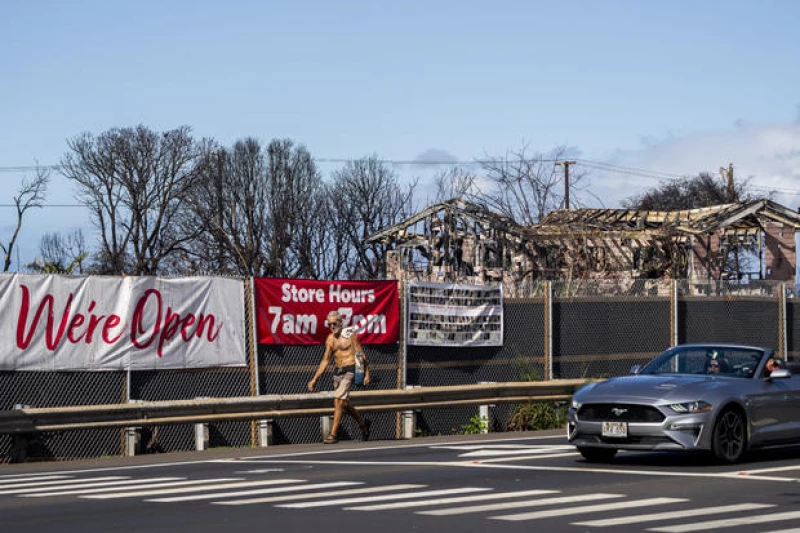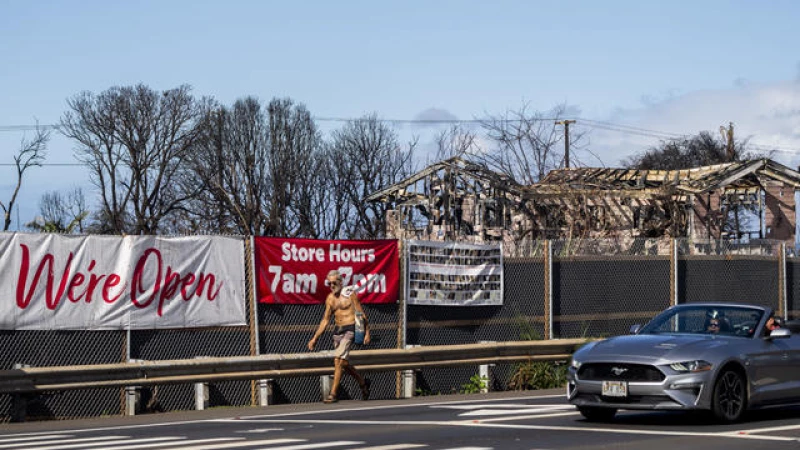Reopened Heart of Lahaina After Deadly Wildfire
The heart of Lahaina, the historic town on the Hawaiian island of Maui that burned in a deadly wildfire that killed dozens of people, reopened Monday to residents and business owners holding day passes.
The renewed access marks an important emotional milestone for victims of the Aug. 8 fire, but much work remains to be done to safely clear properties of burned debris and to rebuild.

The reopened areas include Banyan Tree Park, home to a 150-year-old tree that burned in the fire but that is now sprouting new leaves, Lahaina's public library, an elementary school and popular restaurants.
An oceanfront section of Front Street, where the fire ripped through a traffic jam of cars trying to escape town, reopened Friday.
Authorities are continuing to recommend that people entering scorched lots wear protective gear to shield them from hazards.
On Sunday, the state Department of Health released test results confirming the ash and dust left by the fire is toxic and that arsenic is the biggest concern. Levels were 11 times higher than what's considered acceptable, reports CBS Honolulu affiliate KGMB-TV.
Arsenic is a heavy metal that adheres to wildfire dust and ash, the department said.
The Dangers of Ash Ingestion and Lead Exposure
A recent series of tests conducted on ash samples collected from various properties have revealed alarming results. The samples, collected between November 7 and 8, were taken from 100 properties that were built between the 1900s and the 2000s. The tests showed high levels of ash ingestion and lead exposure, which poses a significant risk to the health of residents.
State Health Director Kenneth Fink has expressed concern over the findings, stating that ash ingestion poses the greatest risk. This is particularly true for houses built before 1978, as lead was commonly used in the paint during that time.
The Ongoing Clean Up Efforts
The clean up process is still in its early stages. Over the past few months, the U.S. Environmental Protection Agency (EPA) has been working diligently to remove various hazards from the town's more than 2,000 destroyed buildings. This includes the removal of batteries, propane tanks, pesticides, and other dangerous substances.
Residents and business owners have been allowed to visit their properties once the EPA has finished clearing their lots. In some cases, residents have been able to recover family heirlooms and mementos from the charred rubble of their homes, often while wearing protective gear.
The U.S. Army Corps of Engineers will soon begin the process of hauling away the remaining debris and taking it to a landfill. However, they will need permission from property owners before they can proceed.
Air Monitoring and Safety Measures
In response to the ash and debris from the fire, the EPA and the state's health department have installed 53 air monitors in Lahaina and Upcountry Maui. These monitors are designed to measure air pollution levels and provide early warnings to residents.
The health department is urging people to avoid outdoor activities when air pollution levels are high, as indicated by the monitors. They also advise residents to keep their windows and doors closed to minimize exposure to the polluted air.







